https://www.youtube.com/watch?v=Jbn5iFWQv5Q
Yoga for Beginners - How to do Yoga with Dr. Melissa West - Yoga with Melissa Episode 101
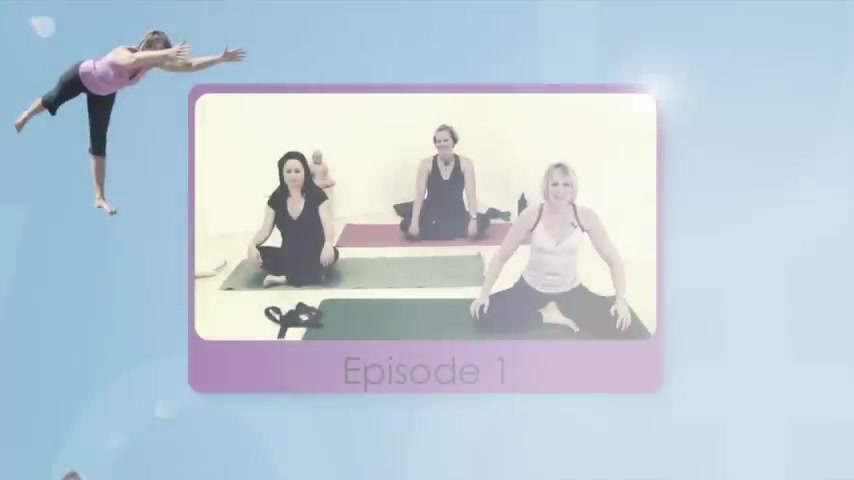
Today's No .
Yoga is yoga 101 yoga for beginners .
Hello , welcome to episode is our blanket .
Excellent .
Not joining us for the second episode and next week the numbest mistakes .
Hello and welcome to episode 101 of Nama Day Yoga .
Thank you all so much for your engagement and feedback and comments on the 1/100 episode of Nama Yoga .
It was such a beautiful episode and I love sharing it with all of you and I loved how all of you contributed to that podcast .
So I appreciate that so very much .
And I wanted to share some feedback that I got this week in general on Nama Y This is from Melanie in Montreal .
She's a neighbor of ours .
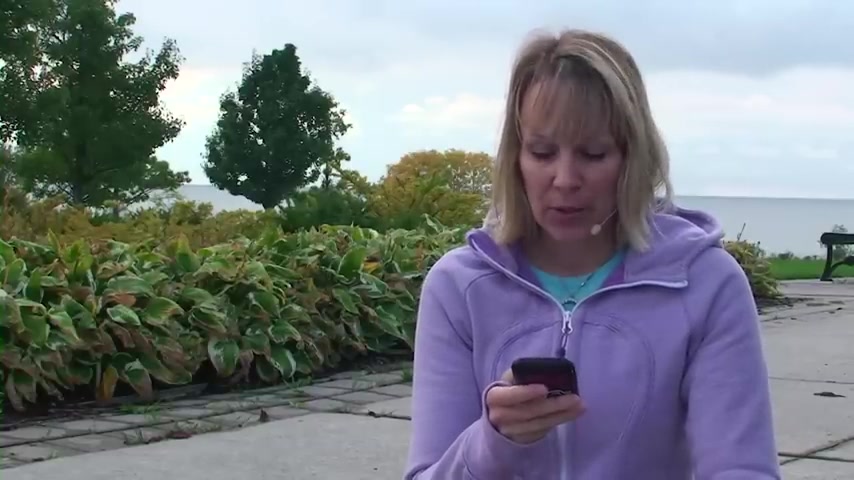
She says I discovered your podcast 2 to 3 weeks ago .
I've been practicing yoga for about 10 years in different yoga classes in Montreal .
I just gave birth to our third child .
So , congratulations Melanie .
And as I don't have much time to run around the city to go to class .
I enjoy your podcast a lot .
This way , I managed to do yoga every day , which is amazing .
She says I find that amazing .
I find that amazing too .
With three young Children , it gives me a lot of strength and it , it decreases the fatigue from my short nights .
God , I remember those days it helps me a lot , being more patient and to open my heart to joy and generosity .
Even when I feel tired , I think that's quite a feat .
Your videos are very professional and I found they are personalized even when you don't know your students .
But I feel like I do know my students because so many of them are friends on Facebook .
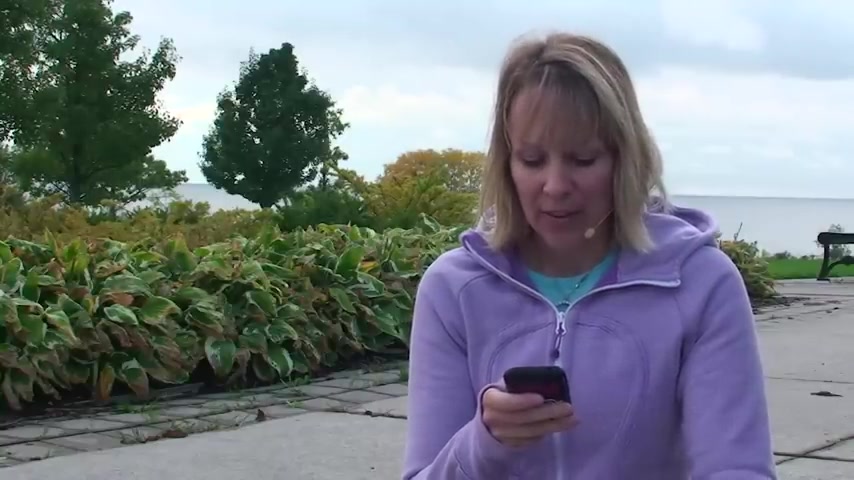
And if you go to Nama Yoga and like Nama yoga on Facebook , there's such a great community involved there and I really love getting to know you there .
So I do know a lot of my students the way you structure your classes with stories or focus on a posture is great and makes it different .
I've learned a lot from your class on Intention , which was episode 72 .
Thank you so much for saying that one that class is near and dear to my heart .
It's my most favorite class that I ever put together and taught .
I think it's one of my most important classes .
It's episode 72 the one on Intention and on Dharma .
So um I just did a post on Facebook yesterday on DMA , an excerpt from Rod Striker's book on Dharma , which was incredible .
So I encourage you to go and take a look at that .
She says my goal is to go through your 90 plus podcast in the next three months .
I think that's a great goal .
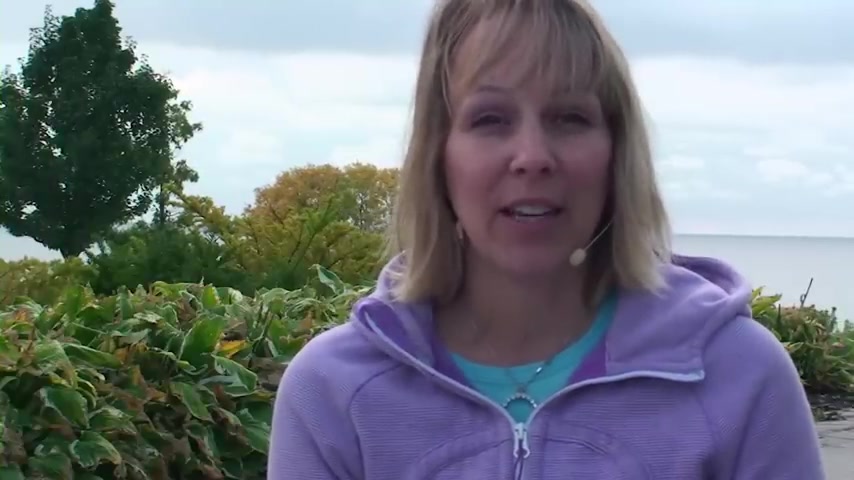
I'm thinking maybe we should get together and , and uh make that a team effort kind of goal .
That would be fun .
So , thanks a lot and please continue your great work .
And then she says , ps it would be great to translate them into French .
So I'm thinking , wow , that would be great .
Maybe Melanie would like to volunteer for that .
Then I was thinking about my daughter who's in French immersion too .
Maybe she could , maybe she could translate them .
Then I'm thinking about all our viewers in Italy and thinking , wow , maybe they could translate them to Italian .
So I think there's a lot of great potential there and I'm really open to the possibility .
Ok .
So let's talk about yoga one on one .
So this is a class for beginners .
We've had a lot of requests for this and it took me 100 and one episodes to get to it .
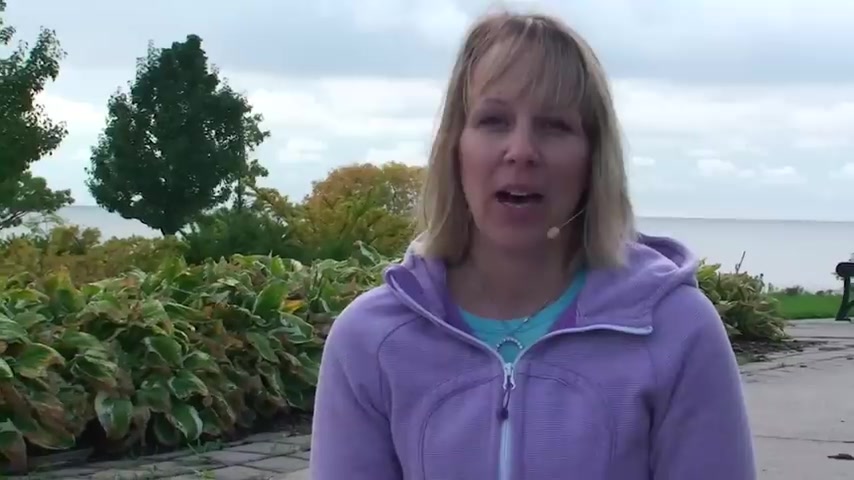
I think partly because the way that I teach , um you can join in my classes any time I know a lot of people will have a lot of concerns and reservations about joining a class because they think they won't be able to do the poses .
And I think a lot of times we have the media's amped up version of yoga to thank for this .
You know , generally what we see in the media are these really kind of outrageous postures that we generally don't do in our classes of .
We , I wanted to do a class that does introduce people to the foundations of yoga and the foundational poses .
So let's start at the very beginning .
And um look at here in the West , in North America , uh yoga has really become associated with the physical postures .
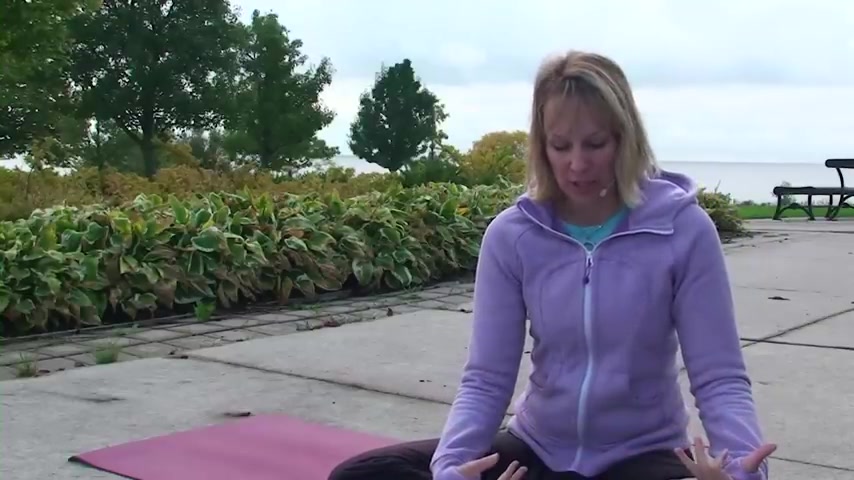
But I do want you to know that it's part of a greater tradition that includes breath , practice meditation mantra .
So it's part of a bigger tradition and history that I love to engage in our teaching , the definition of yoga is to yoke .
Um And that means to yoke , uh it means union .
And so in our classes and in our practice , we're working on creating that union to yoke , that union between all the layers of our being .
So not just our physical bodies , which are the densest layers of our bodies , but also our um our mind , our emotions , our spirit .
And so I think I did a series on the five Kosh .
You could go back and look at that .
We did do a series on the five Kosh Tim thing .
So you could go back and look at those .
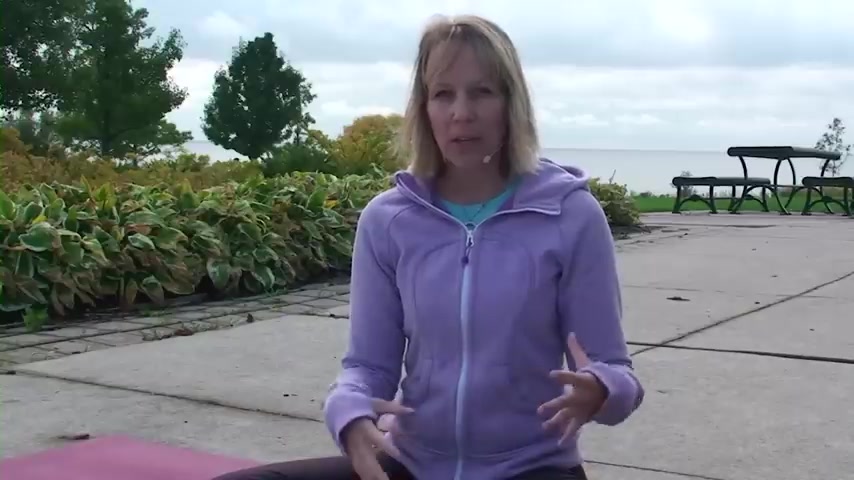
But that's what I'm talking about when we're um creating that union between all the layers of our beings .
And also we're connecting with the divine .
Ultimately , you know , yoga does have this spiritual connection and it is definitely something that I like to engage in the practice as well .
For me , the the most important thing about yoga is that it increases our self awareness .
So um this the way that it does this is that it removes the illusions that is maya , it's called maya so that you can really see your true self .
So think of it like a lamp and on a lamp , you have a lamp shade .
So a lot of times we become identified with the lamp shade .
So that is we think we're the shade , but in truth , we're the light underneath it .
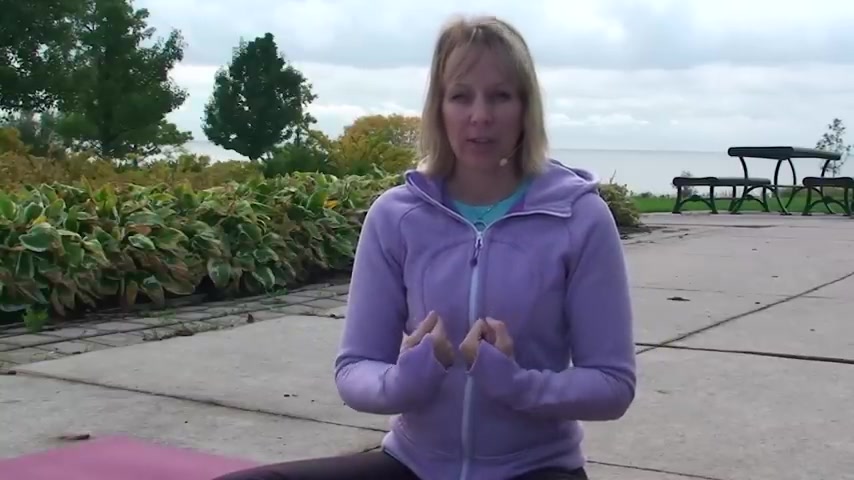
So in our lives , that might mean that we become identified with our roles as mothers , our occupations , our relationships , but there's something deeper and truer at our core , that is our essence .
So for me , that's what yoga means to me right now .
At this stage in my game , I want to just also describe the structures of my classes .
Generally , we start lying down in that is so that you can ground and send to yourself in your practice before you get started .
It's an opportunity to transition from the being pulled in every direction in your day to day life to a more centered focus .
We'll do some guided meditation there .
Today , we'll connect with our breathing , we will become aware of our body and we'll also set an intention for your class , for the class .
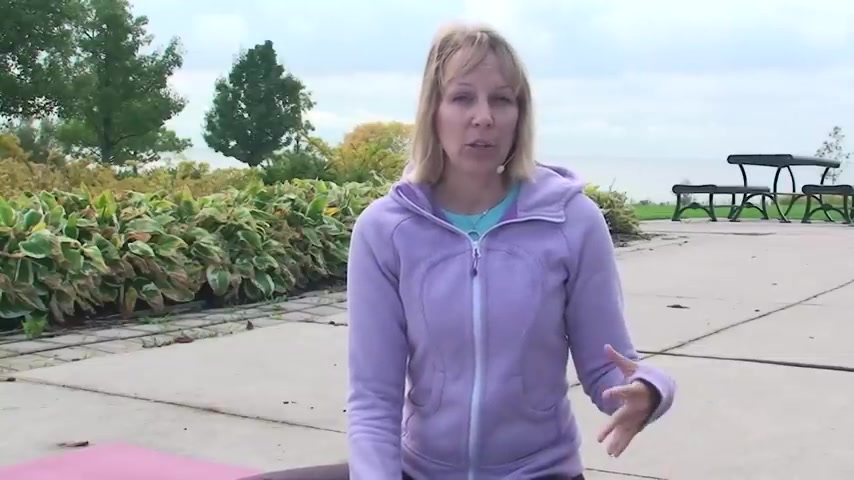
So what it is that you want to receive from practicing yoga from there .
Generally , I I stay lying down on the mat and you will engage in some gentle warm up postures to prepare your body for the poses that are to come later in the practice .
Um We gradually work our way from lying down up to kneeling , eventually up to standing , doing standing postures and then the whole practice circles back down and around so that you end up um lying down on the ground at the end again for Shana , for corpse pose to assimilate and integrate your practice .
So that's generally where things are .
If you have any questions , usually when I teach , you can ask them right away .
But in this format , you can always like us on Facebook and post your questions on the wall on yoga there .
And I do respond to those questions there .
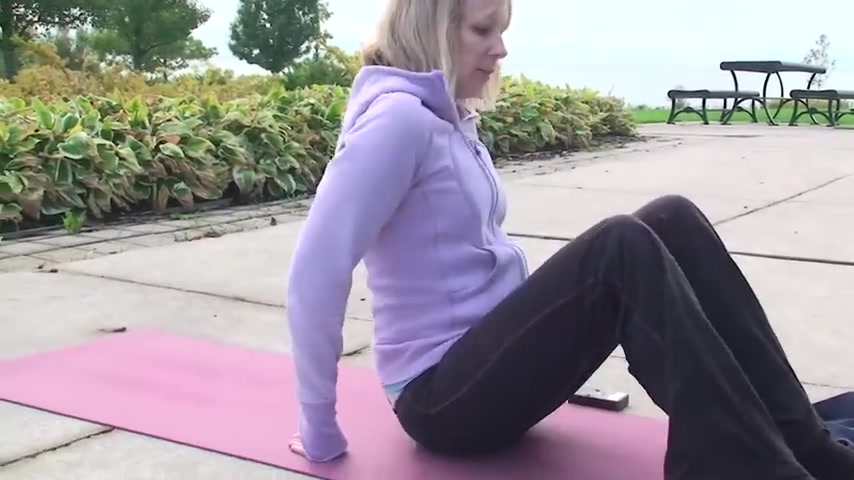
Um Yeah , but definitely ask and we'll get started for now .
So you are going to go ahead and lie down .
So , since this is the beginner class , I think I'll even give some direction around that .
Yeah .
So you lie down on your back and generally you do this with your palms up your arms to your side and your legs long .
So one of the first things you want to do is check in with your body right now .
If your low back is sore , you can always do this with your knees bent , which should ease any tension in your low back And also the other thing you'll want to check is if your chin is higher than your forehead , then you'll want to stick a pillow or something underneath you to prop it so that your forehead and your chin is on the same level .
Ok ?
So we're going to stay lying down now and I'm going to lead you through a breath practice here .
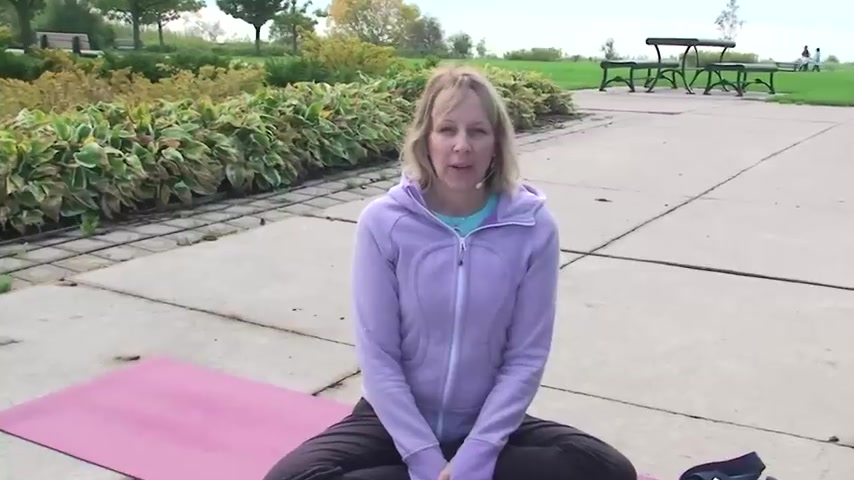
So take a deep breath in through your nose and let it fall out of your mouth .
And now let your attention settle on your breathing .
Follow your breath as it comes into your body and follow your breath as it leaves your body , become aware of your breath .
What's happening with your breath right now ?
Where do you feel it in your body ?
So there's no right or wrong answer to this .
No better best .
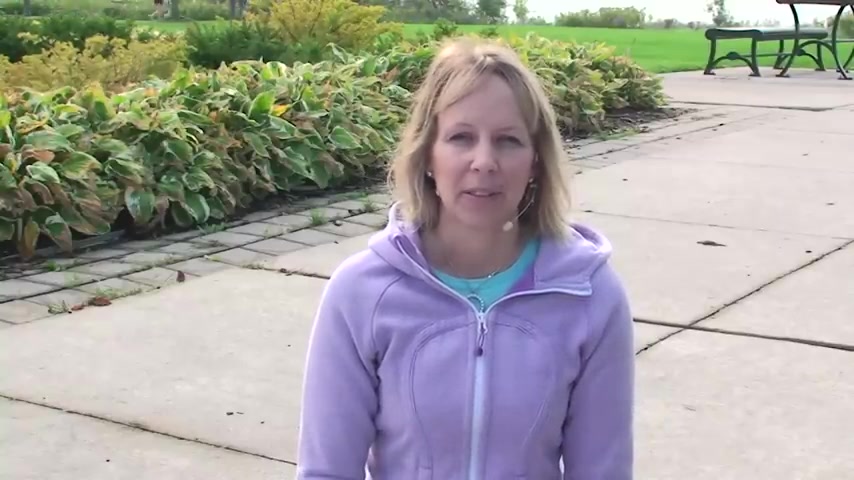
You're just trying to become aware of what's happening with your breath right now and then take a deep breath in , let it fall out of your mouth .
And now bring your attention to your physical body .
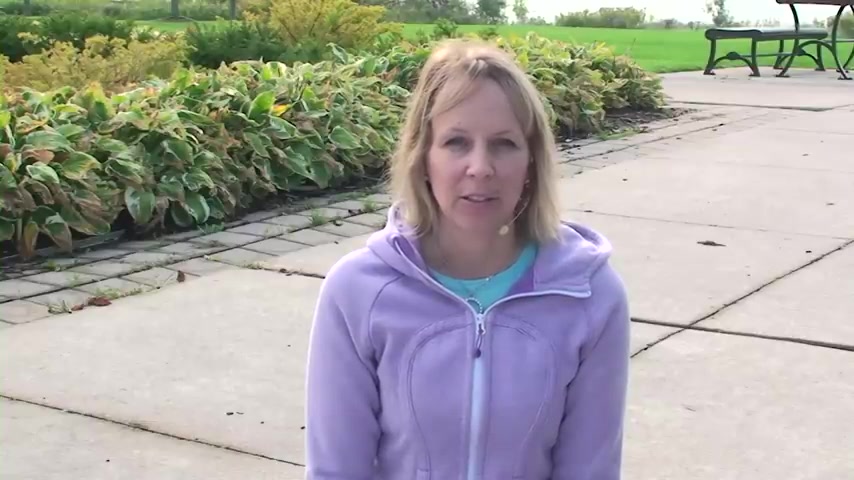
Notice your feet , your ankles , your lower legs , your knees , your upper legs , your pelvis , your low back , your belly , your upper back , your chest , your shoulders , your arms , your wrists , your elbows , your hands , your neck , your head and your face .
You tune into your body .
What stands out what's calling your attention right now ?
Maybe there are places that feel a little painful .
Maybe there's some tightness and also bring your awareness to the places where you feel ease in your body .
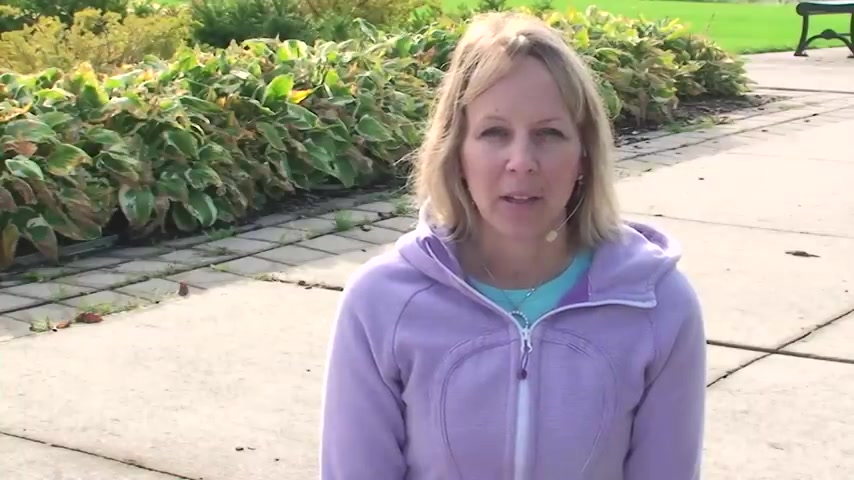
Take a deep breath in , let it fall out of your mouth and now bring your attention to your life circumstances .
What's going on in your life right now with your work , your friends , your family , things you do for fun and hobbies , what's going on in your life right now and take a deep breath in , let it fall out of your mouth .
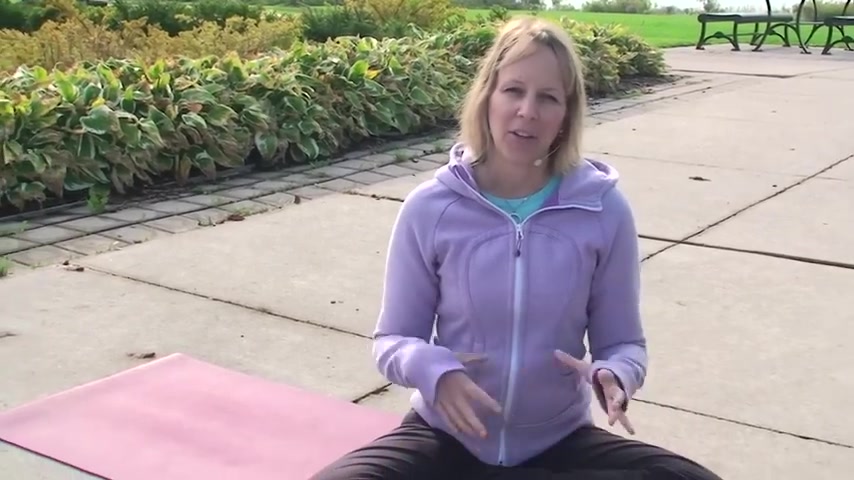
And now you'll bring all that information that you've gathered together , what you discovered about your breath , what you noticed about your physical body and all the things that are going on in your day to day life right now .
And from that place of awareness , set your intention for your practice .
So what is it that you would like to receive by doing yoga right now ?
And really this , this intention is as simple as answering the question .
Why did I choose to do this yoga today ?
So that your intention using the word I and stating in a positive way , like an affirmation .
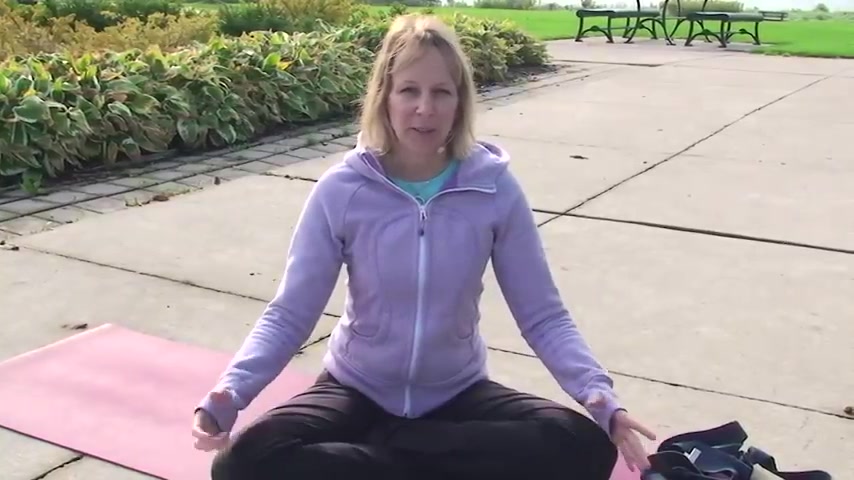
And once you've set your intention , you can begin to wiggle and stretch out a little bit .
Ok ?
For this practice , you're going to need a strap .
Now , I'm assuming since you've come to this class as a beginner and you don't have a strap , which is totally fine .
You can take an old neck tie or um , you know , it works really well is a strap from your bathrobes just pull that off and you can use that .
I almost actually brought mine to show you that that was totally OK today .
Um So what we're gonna work with first is hamstrings .
So , one of the things that I found as a beginner in yoga classes was that my physical limitations in the practice were from super , super tight hamstrings .
So this helps to prepare you for a lot of the poses that require a lot of flexibility in your hamstring .
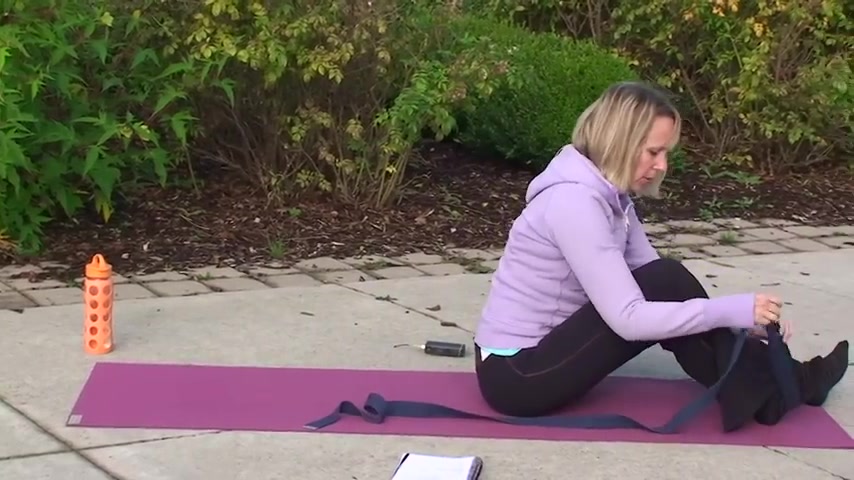
So you'll stay lying down and you'll place the hoop of the strap or if you're using the bathrobe , you can just go like this around your right foot and you're gonna draw your right .
So one of the things you want to practice in yoga is really being where you are and not forcing anything .
So we're gonna practice choosing your just right edge , we call this a physical edge .
So if I was to draw my leg in more and have to start bending it to make this happen to get a bigger shape then , so I want to back off now , if I was down here , then there's really not much going on .
So I want to come somewhere in between too much and too little where something is happening and I can bring awareness to what's happening .
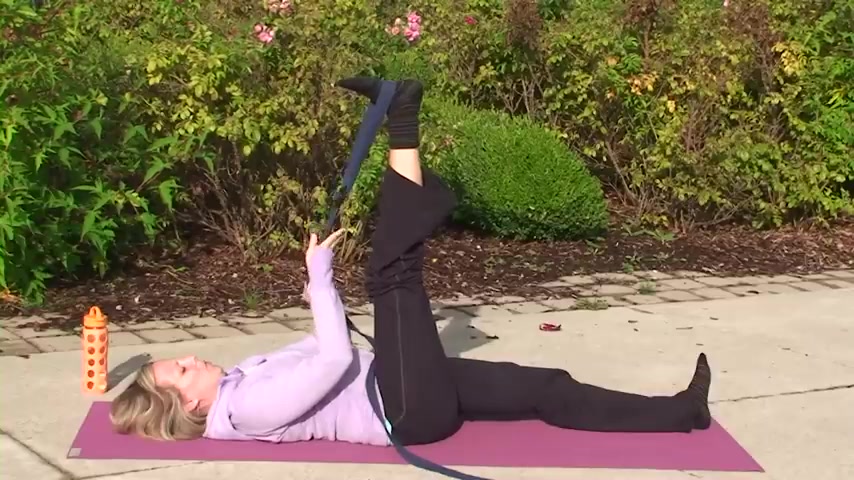
OK , let your shoulders be heavy here and check in with your fingers to a lot of people really grip really strongly on this part .
So as Rodney always says in yoga poses , there should be ease and steadiness in the pose and you should be engaged .
So not so little going on that you're not aware of what's happening in your body .
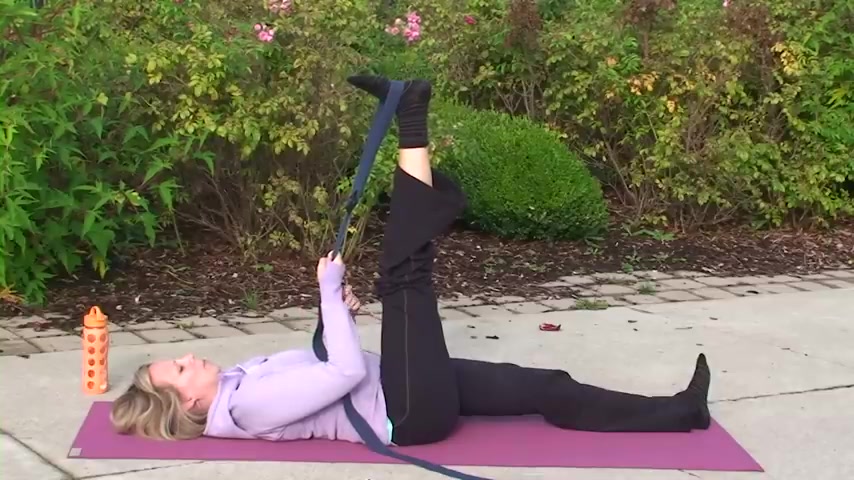
So the way I practice yoga and teach yoga is we go for longer holds to um to be in the posture for a long time , you end up breathe as you pause here in this posture , feel the opening on the backs of your legs and then open your right leg out to the side .
You want to keep your left leg really sinking and dropping here as you open your right leg out to the side and again , find that just right place to stop where you feel like something is happening , but it's not too much that you can't stay with it .
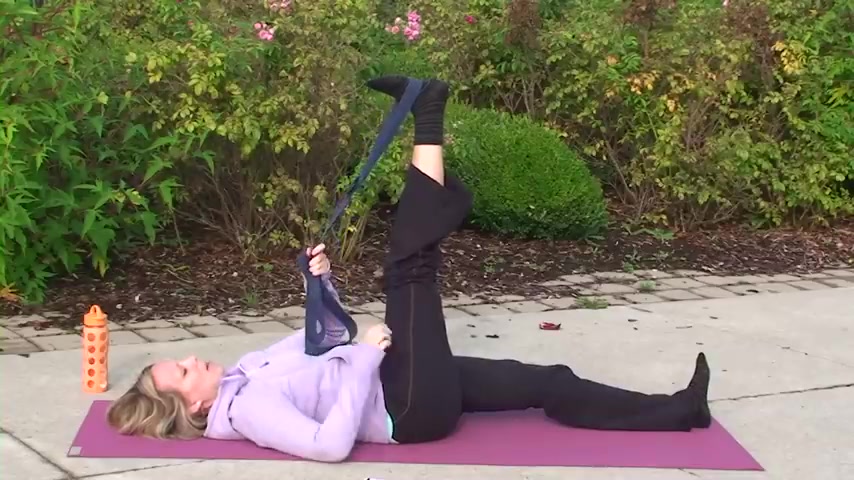
Ok ?
So slowly bring your right leg back to the center and you're gonna cross your leg over your body .
Now , with this one , you want to keep the back of your pelvis on the ground .
So it won't take a lot of crossing to feel pretty intense sensation along the outside of your leg .
Notice what's happening with your breath right now and then bring your right leg back center and you can unhook your right foot and lower your right leg down to the ground .
Ok ?
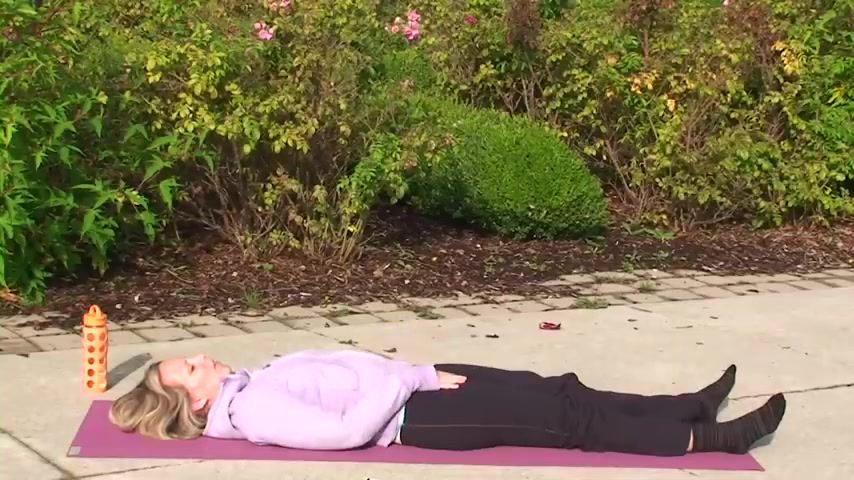
So we're gonna pause for a moment here and before you hook up the other side , I want you to check in and notice the difference between your right leg and your left leg right now .
So , some of the things that you might feel is that your right leg feels a little bit longer and it also probably feels a little bit more , dropped a little closer to the ground .
So it's always good to check in and feel the effects of your practice .
So let's hook up your other leg , open up through the back of your leg .
So my friend , my friend Annie Boudreaux posted a really great article on her blog post about forward folds and tight hamstrings .
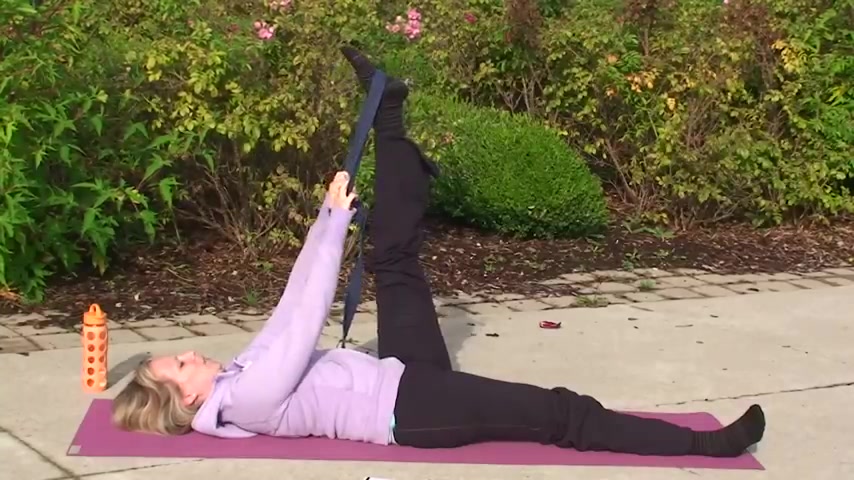
And she said in that article that tight hamstrings are related to control .
And I think this is a real issue in our culture is that we really try to control everything .
It's hard for us to surrender into and to relax into things .
There's a lot of effort to control things .
So this could be one of the reasons why we have such super tight hamstrings , your hamstrings and the muscles on the backs of your legs here , the backs of your upper legs .
Another theory that I have too is that we're always running , running , running and that creates really tight hamstrings as well .
Ok .
And then you're gonna open your left leg out to your side so often , what I'll see here is this right side lift .
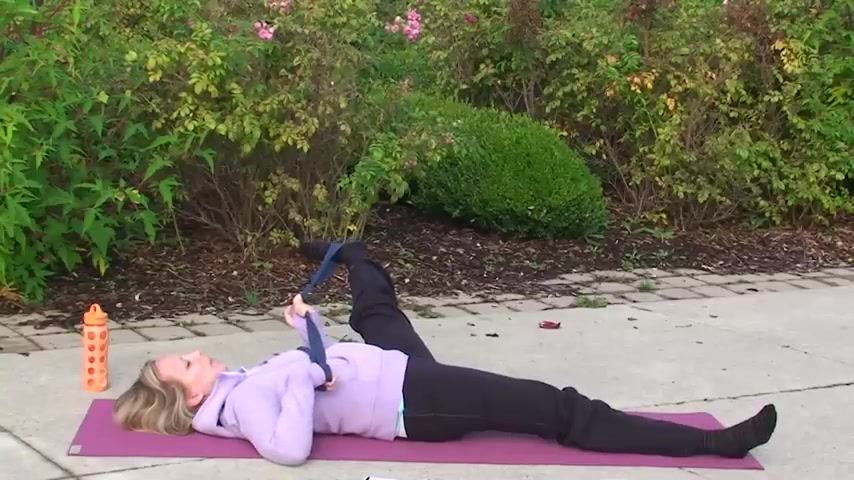
So you want to back off a bit with your left leg and sink down to your right leg that could help or just think about dropping and lowering your right leg to the ground .
And remember yoga is about your own personal practice .
So it's definitely not a competition and it's not a practicing comparison .
So if this is your first time doing yoga or if you're just beginning at it , it's really not fair for you to compare yourself to me because I've been doing yoga for a long time .
So your yoga today really shouldn't look like my yoga .
It should be your own yoga and you're doing it right .
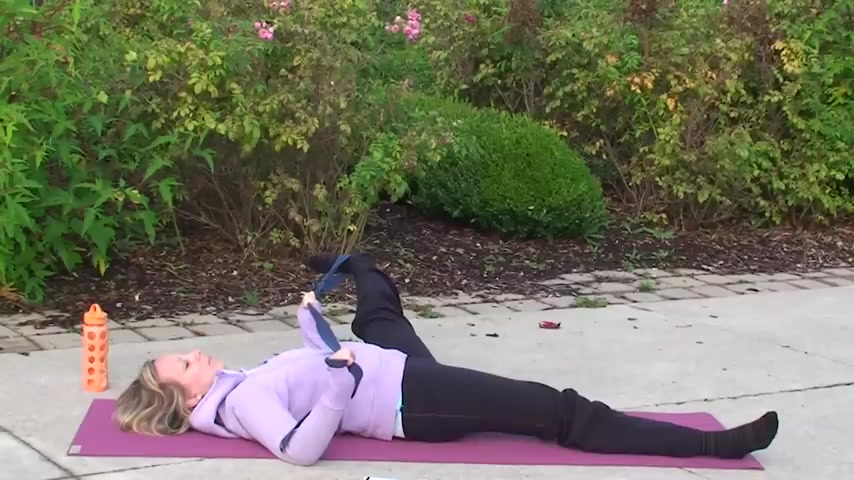
If you're feeling it , if you're having some kind of experience of what's happening , ok , then you're gonna bring your left leg back to the center and keep your left pelvis on the ground and start to cross your left leg over your body .
You wanna feel this all the way on the outside of your leg , but also not too that you might be feeling it in different places because um if you're new to yoga , you may have spots that are more intense than this .
So I've had students say that they're just really just feeling it in , in their hamstrings or maybe they're feeling it more in their calf .
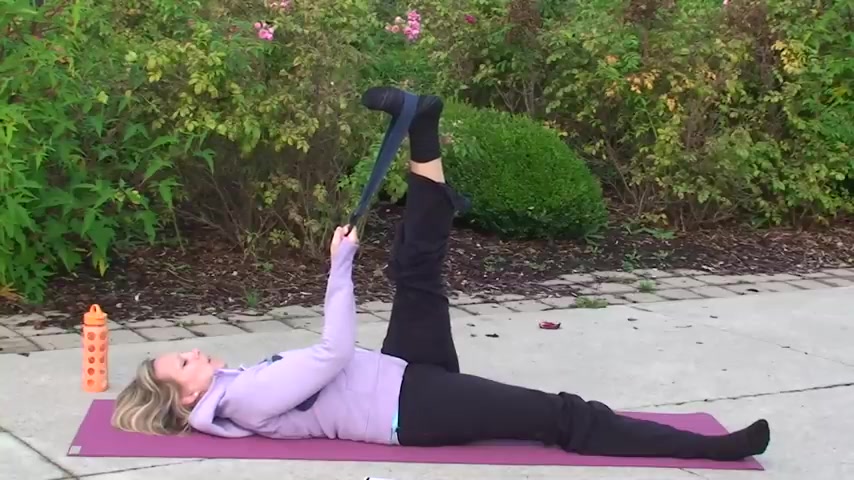
So where you're feeling , you're just going to be present to the sensation that's happening in your body right now and continue to breathe and then bring your left leg back center and you're going to lower it down to the ground and just take a moment here to integrate that .
So take a deep breath in through your nose and let it fall out of your mouth .
OK .
So from here , we're going to do a posture to open up your hips .
A lot of yoga postures require a lot of opening and flexibility in your hips .
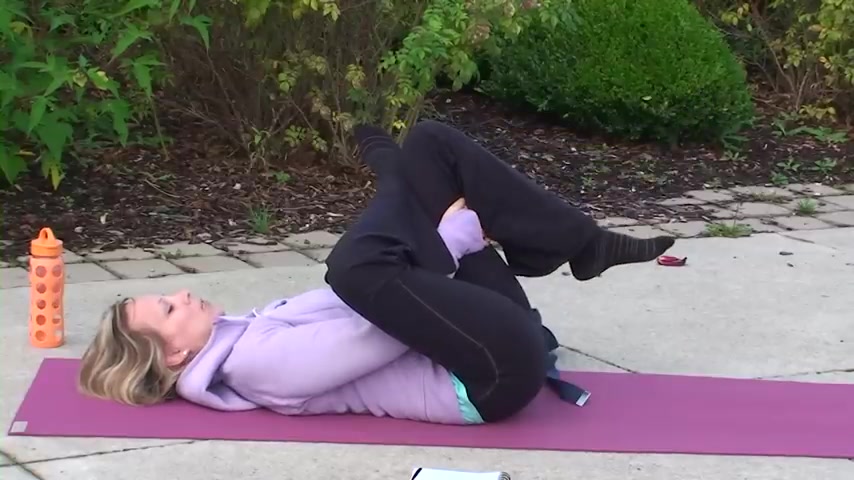
And in our culture , our hips tend to be quite tight because we sit in chairs a lot , we walk a lot up and downstairs .
All these things create tightness in our hips .
So let's start by crossing your right leg over your left knee and really open your right leg out to the side and then draw your left leg in .
OK ?
You're gonna reach through and hold on on your left hamstring .
Now , this might not be possible , it might be too tight .
So if that's the case you're going to take that strap or that bathrobe tie that you've got and you're going to use that to draw your leg in .
OK ?
One thing that I see a lot of here is this kind of efforting .
So use your strap , keep your head and shoulders heavy .
This is an exercise for your hips , not for your neck and your shoulders .
And also another thing that happens a lot here is people straighten out this leg and that totally decreases the stretch .
So if you want to ease off the stretch , then you could straighten your leg .
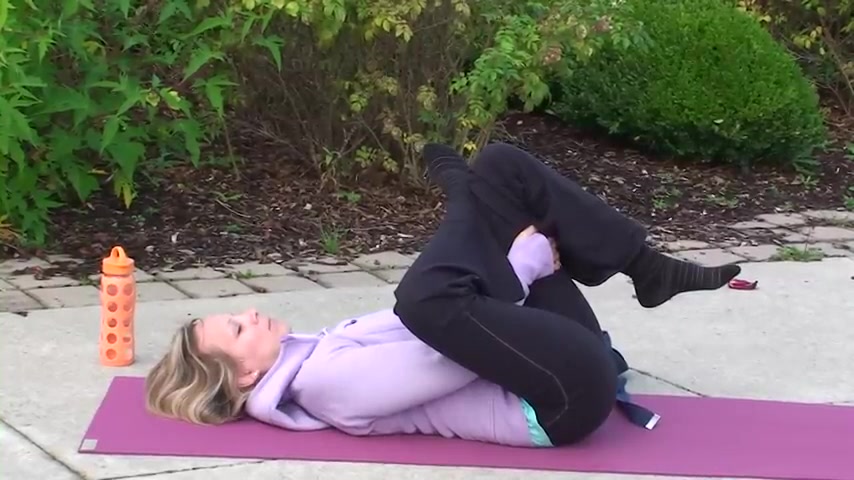
But generally this left leg should be really bent .
Yeah .
And then mindfully come out of this posture , unc cross your right leg and then cross your left leg over your right leg .
Really open your left knee out to the side and draw your right knee in towards your chest .
Remember you can use the strap if you need to reach through , hold on on your right hamstring .
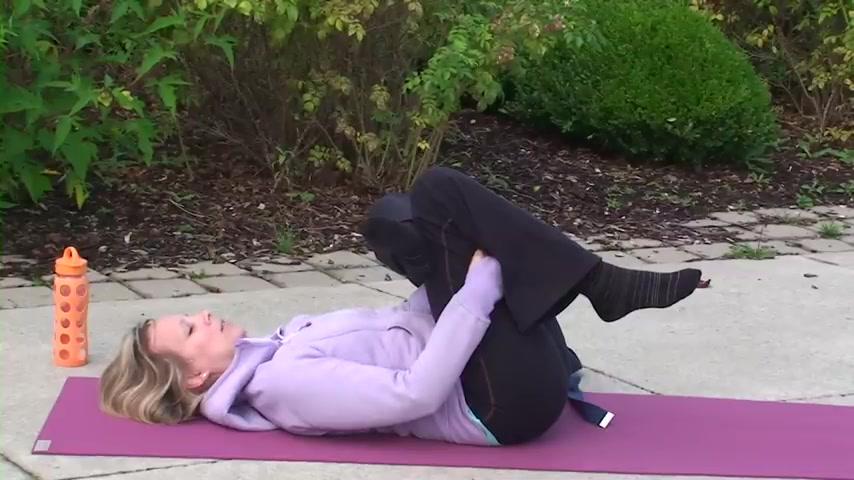
And what's happening with your breath right now , the thing that really makes yoga , yoga is your breath , moving your breath through your body .
Ok ?
And then you're gonna slowly lower down , bend both knees , roll to your right side and come up .
Oh , I'm gonna do one more .
So I'm gonna do one more on your back .
Ok ?
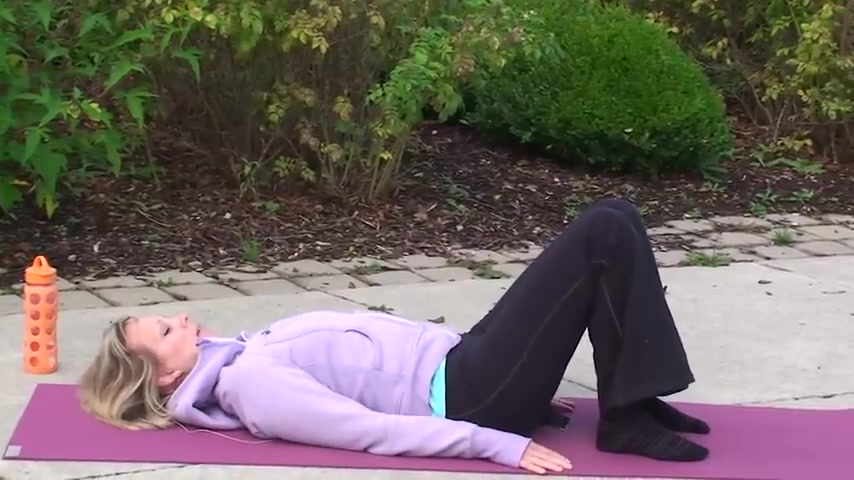
So here you're gonna have your knees bent and your feet flat on the floor , place your hands by the side of your body , your feet are gonna be hip with the part .
So he heels , ankles and sit bones should all line up , press into your feet until your pelvis lifts up off the ground .
So this is called bridge pose .
It's a great counter pose in our culture because it opens up your chest .
It's a great way to start practice because it gets you connected to your legs and your feet which grounds you .
We tend to be so busy running around and on computers and working so hard all the time .
We get a lot up in our head .
So this pose really helps us to come back down into our bodies .
One thing I see a lot of in this pose is knees really splayed open .
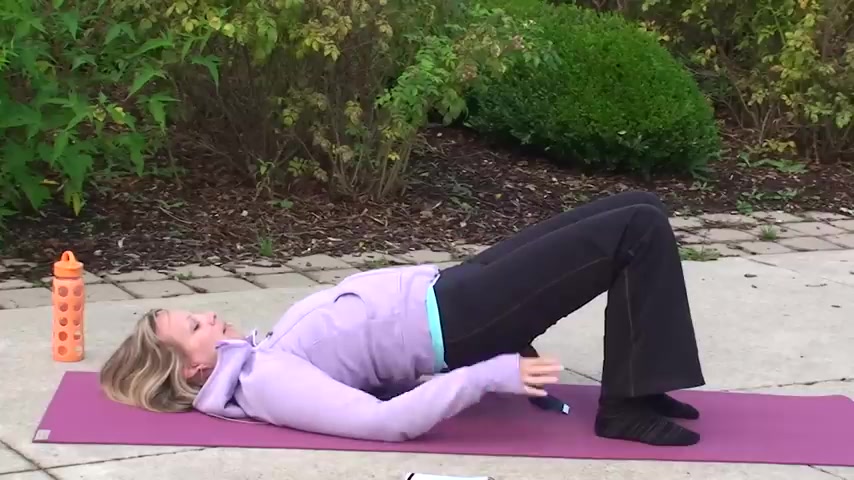
You want to keep your legs parallel here , really connect to the inside edges of your feet , your big toe , your big toe ball joint , the inside edge of your heel , ok ?
And then you can slowly lower down and hug your knees into your chest .
If you have any knee issues , you do want to hold on behind your knees .
So this is a counter pose to the bridge pose , the bridge pose was a back bend .
So this is a forward bend .
And you'll find that we do this in a lot , a lot in , in yoga classes , we'll do a pose and then a counterpose .

If we want to spend equal time resting after postures , we did exerting effort in the posture , lower your legs to the ground .
Now we're going to roll to our right side and really come up onto all fours .
Ok .
So on all fours , you'll have your hands underneath your shoulders and your knees underneath your hips .
We're going to do cat pose .
And if you have a cat at home , it's just like what your cat does .
You're going to exhale and round up through your back and then in Helen Archer back in the other direction .
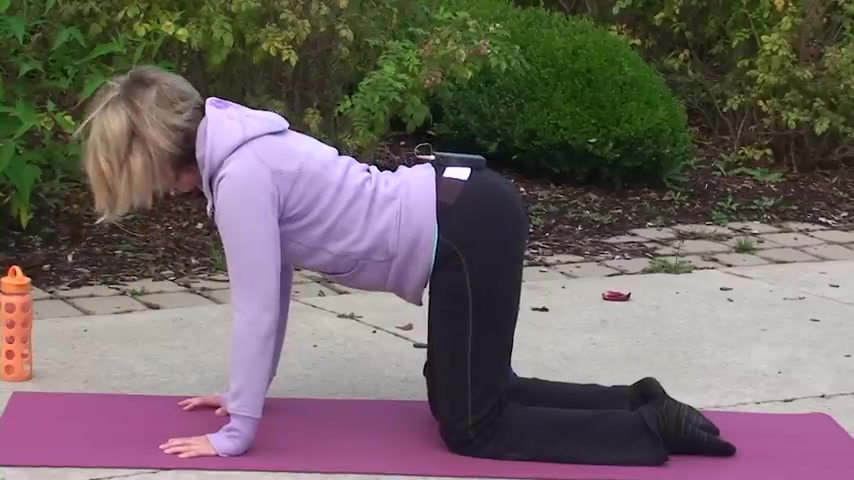
So breathe out , lift your heart , your back up towards the ceiling , draw your head and your tail closer together and then you're gonna inhale and arch your spine in the other direction , lift your head and tail , open your chest and belly towards the ground .
So back and forth like this , breathe out as you round breathe and as you arch and this helps to warm up your spine and increase the flexibility in your spine .
Pay attention to your hands here .
You want to spread your fingers nice and wide so that you're taking the weight out of your wrists and into the webs of your hands .
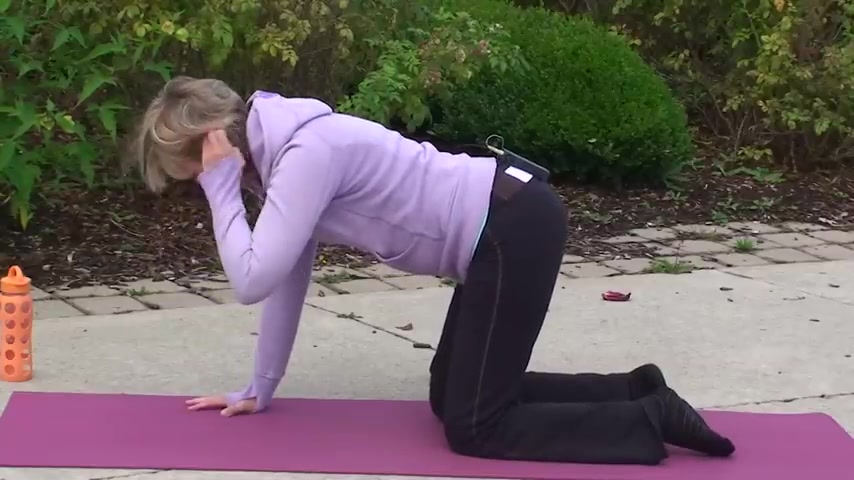
OK ?
And now we're going to rotate our spines .
So take your right arm out to the side and then thread your right arm between your left wrist and your left knee , lower your right shoulder to the ground , rotate your rib cage around .
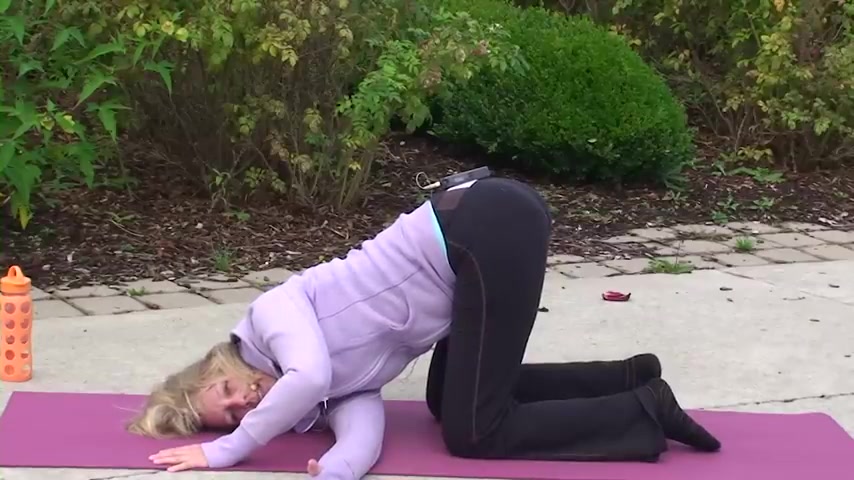
This is called thread the needle and then come on up and let's do that pose on the other side .
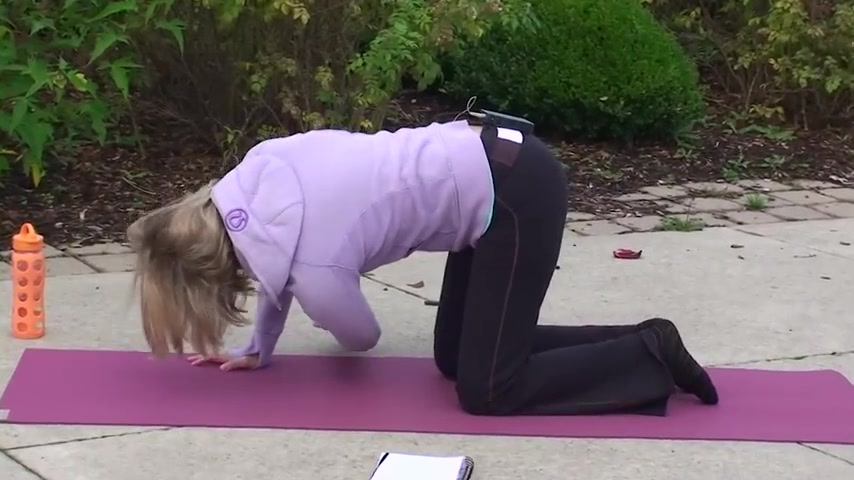
So inhale , take your left arm out to the side , exhale , place your left arm between your right wrist , your right knee , lower your left shoulder to the ground , rest the left side of your head on the ground and check in with your breath here .
OK ?
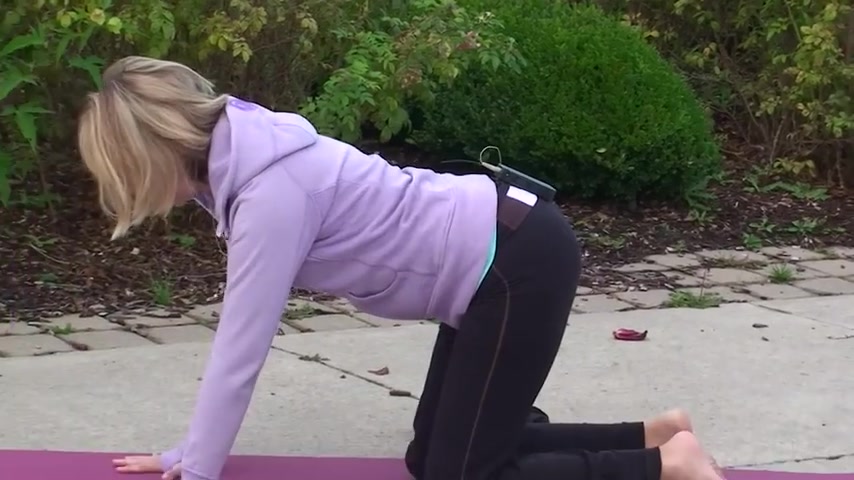
And then come on back , center onto all fours and we're going to do downward facing dog .
So this pose the first yoga class I ever did .
I thought I was gonna die in this pose .
It does get better .
I'll tell you that I actually really like this post and I remember the first class I did .
It was , um , I'm pretty sure it was a video tape as well .
And this person kept bringing us into downward facing dog as a rest .
And I thought this really isn't a rest for me .
So keep , keep that in mind that a lot of things have to happen for downward facing dog to be comfortable .
Uh You want your spine to lengthen out your hamstrings need to be nice and long .
So let's just check it out .
So you really want to spread your fingers wide , your middle fingers should point straight ahead and be parallel to each other .
Tuck your toes under , breathe in , breathe out , reach your hips up towards the sky .
Ok ?
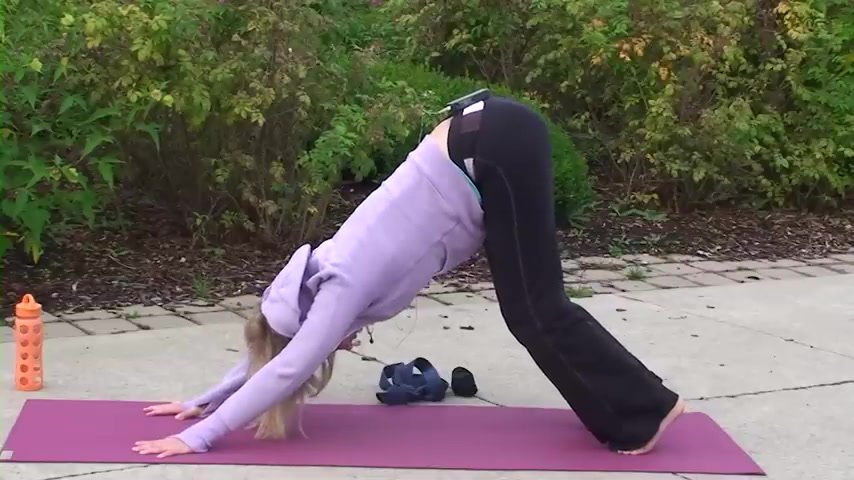
So what I tend to see in this pose a lot is something like this .
Ok .
So people get their feet on the ground , but really their spines all crunched up .
So what I would rather see in this pose is to take that normal stance , step back .
So you find that by starting on all fours and you can bend your knees and lift your heels as much as you need to and instead really get your spine long .
So you can probably really see the difference .
There , there are lots of hoses in yoga that can open up your hamstrings .
So let's just work on getting your spine long here .
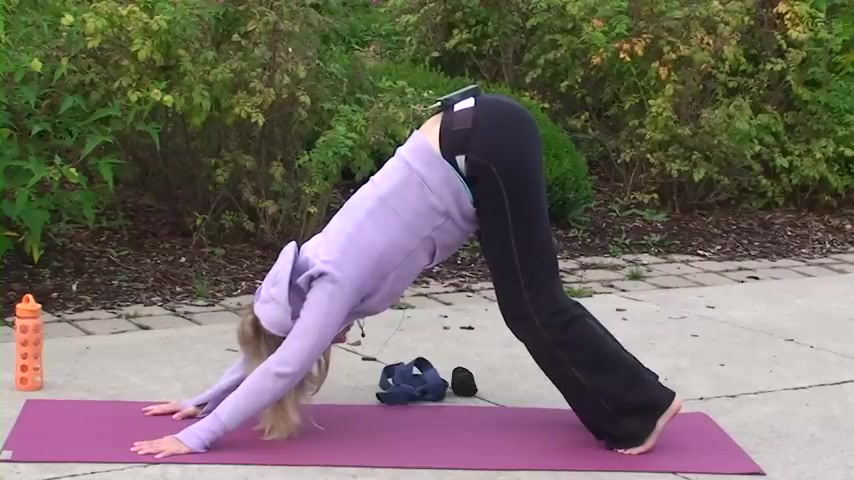
I think that's the most important thing you wanna reach your weight back towards your feet .
Ok .
And then bend your knees , you're going to lower down , sit back onto your heels , fold forward over your bent knees .
This is called child's pose .
It's a rest pose .
Now , for some of you , this probably won't be a rest because if the tops of your legs are super , super tight , first of all , it's gonna be hard to get your butt all the way to the ground .
It's ok .
It will calm if it's really hurting your knees , then you should lie on your back and hug your knees into your chest .
Instead .
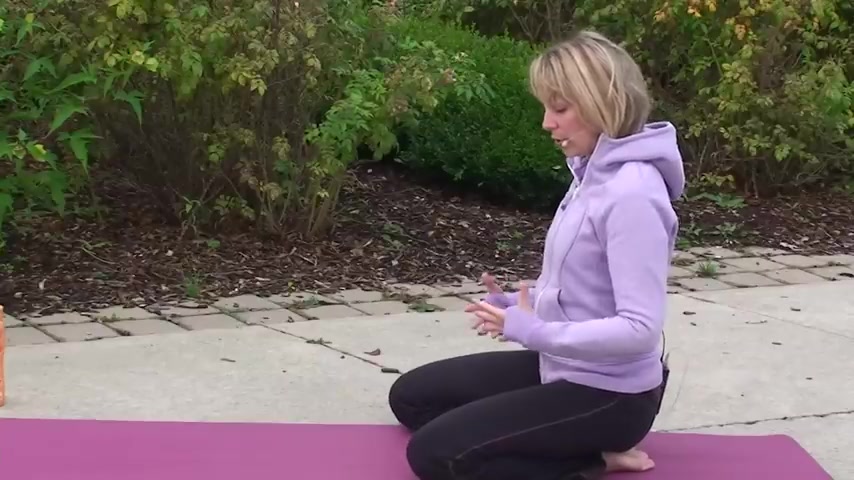
Um The other thing in this pose , especially for women and depending on the shape of your body is that you can open your knees and make space for your body here too .
Ok ?
Now you're gonna roll up to your spine .
We're gonna do a really important pose .
Uh Another counterpose to life because we sit all the time .
Our hips are at a right angle like this .
They're always contracted .
So we're going to do lunge pose , which helps to open up the front of your hips .
So you're gonna come up to kneeling , standing on your knees .
And it's a really good idea here to pad underneath your knees as much as you need to , your knees are precious .
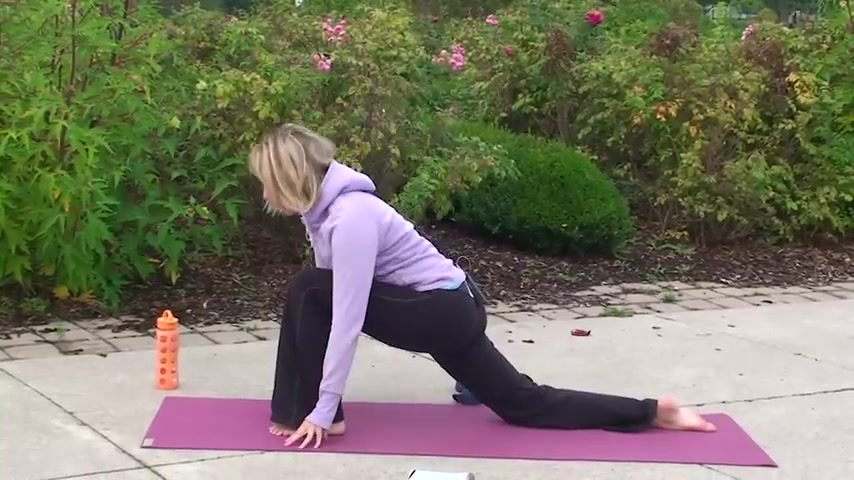
And so really do protect them as much as you need to .
You're going to take a step forward with your left foot and lean forward .
So you feel a stretch in the front of your right hip .
Ok .
You want your left foot to be far enough forward so that your knee is over your ankle .
Uh , what I see a lot of in this pose is this kind of thing and see how my foot's right up off the ground here .
You want your whole foot on the ground .
So if that's happening , just scooch your foot forward a little bit more .
Another thing to really think about is to be dropping this left hip .
Ok ?
And then let's just shift back , keep your whole left foot on the ground , shift back .
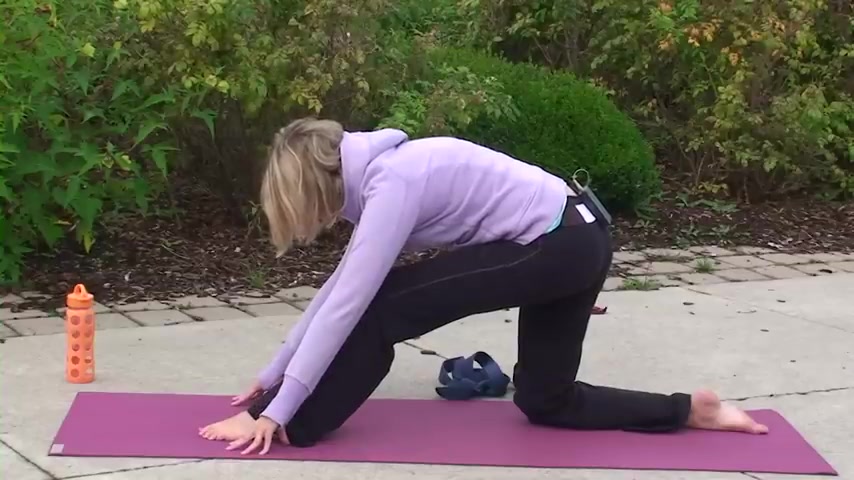
So you're getting another opening through your hamstrings .
This is called low pyramid pose and then we'll switch sides .
So bring your left leg back and let's step your right leg through .
Ok .
So lean forward , full , right foot on the ground , right knee over the right ankle , opening up through the front of your left hip .
So lean forward .
So that , that happens .
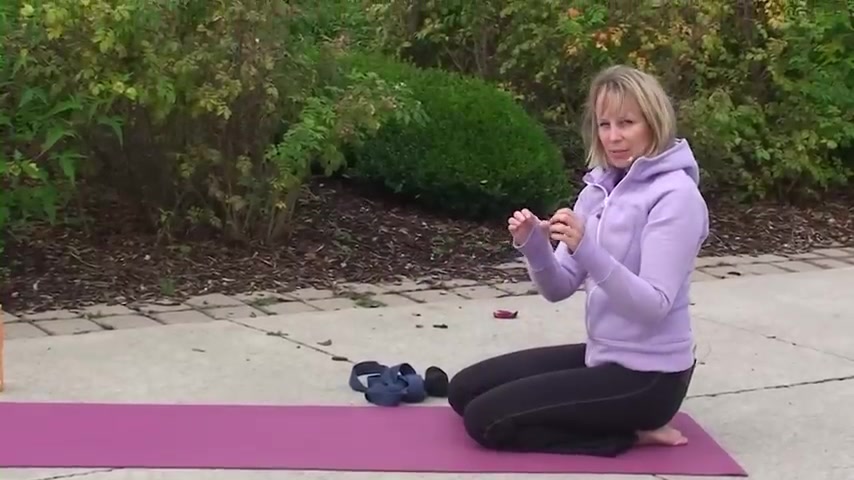
And then again , we'll shift back just so you're opening up your hamstrings again , try and sink and drop through your right sit bone here .
OK ?
And then bring your right leg back , come back onto all fours , spread your fingers nice and wide again .
And one thing I find as a yoga teacher these days , unlike when I first started is people's hands are really contracted and tight .
And this is from , of course , working on computers , your mouse on your computer and then all the pdas um texting and all that stuff creates a lot of tension in our hands .
So a pose like down dog , we can really spread our fingers wide and find that flexibility in our hands again .
Tuck your toes under , inhale , exhale , come into downward facing dog .
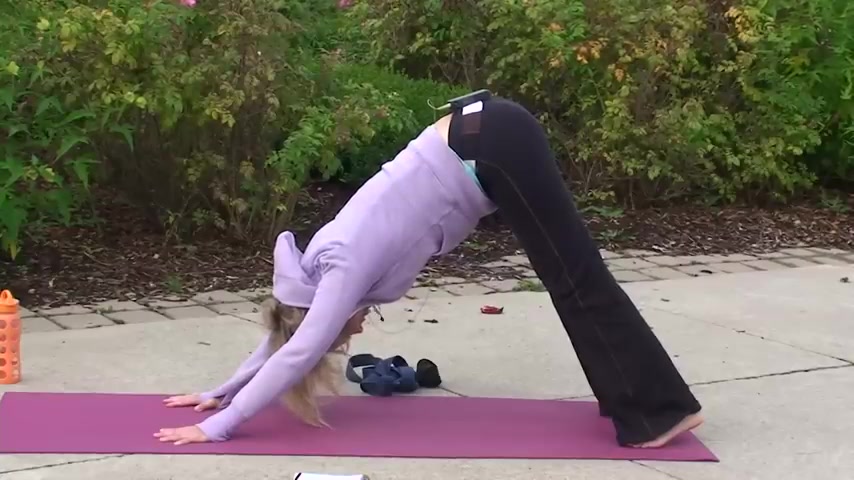
Did you see that ?
We just had , I think it was a mouse right across the path here .
Hey .
Oh , it wasn't in shot .
Ok .
You missed that .
A mouse just ran behind me , walk your left foot forward , walk your right foot forward .
Uh Come into a standing forward , fold , bend your knees as much as you need to here because again , as a beginner , it can be really tough .
It might be looking more like this right now .
So bend your knees as much as you need to be able to drop your head and relax your spine , then tuck your tail under and you're gonna roll up to standing .
How are you doing so far ?
You're getting through it ?
You're doing really , really well .
I know .
Ok .
So we're going through a lot of the basics in this class .
Two mice voles .
Oh Vols again .
Ok .
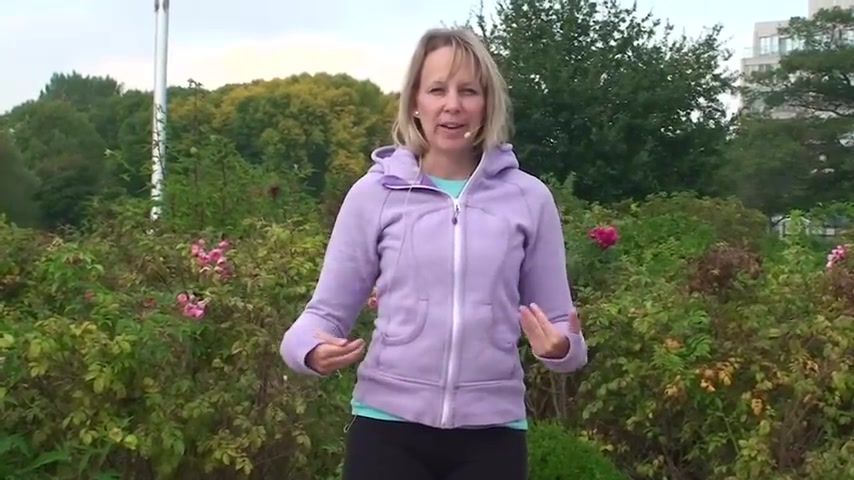
Um We're going to work with mountain pose .
This pose was one of those poses that I really didn't understand when I first started taking yoga .
But the longer I've been doing it , the more I understand it as an important pose .
First of all , all your standing postures come from this pose and it teaches you how to uh be in a neutral position in your body .
So let's start building this pose from the ground up , this really simple pose .
First of all , you want your feet to be hip with a part .
Now , the way you determine that I know a lot of women go , OK .
My hips are right here .
So it needs to be something like this , but it's gonna be right underneath your hip bones , your iliac crest here .
So bring them right underneath and then you're gonna lift and spread your toes wide and check that the inner edges of your feet are parallel like they're in railroad , railroad tracks , you wanna turn your knees so they face straight ahead .
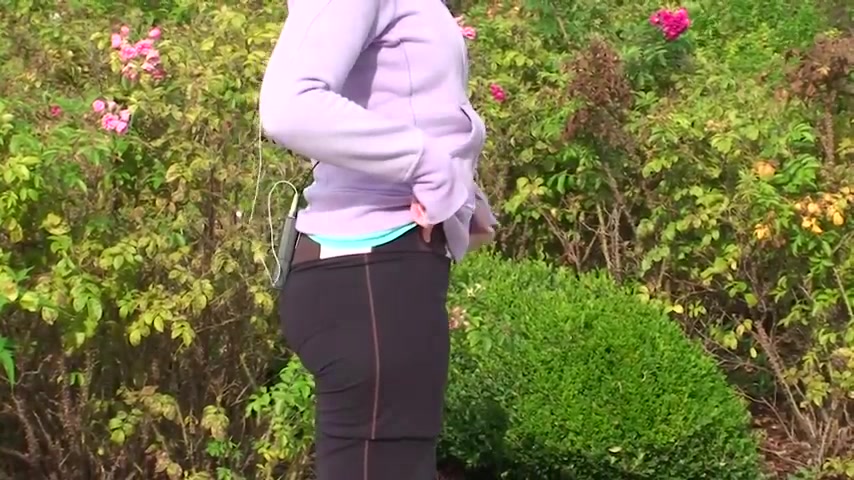
So some of you might have knees that go out , some of you might have knees that go in .
So turn them either at an end so that they're pointing straight ahead .
Now , here's the next thing , this is really important .
You're going to lengthen your legs out of your pelvis .
So I don't know if you noticed when I did that as I lengthen my legs out of my pelvis , my whole spine straightens up .
You also want your pelvis to be neutral .
So the way that you find neutral in your pelvis is that your hip bone , your hip bone in your pubic bone should be on the same level .
If you were to take one of those levels a little bubble would go in the middle of the two lines .
OK .
So hip bone , hip bone on the same level .
So for some of you , that might mean if your posture is like this , you need to swing your tail out a bit .
For some of you , your tail might swing out more .
So it might mean tucking it under a bit .
So it's you got to check in with your own body .
Generally speaking , most people are rounded like this .
So let's roll your shoulders back and down and lift your chest up .
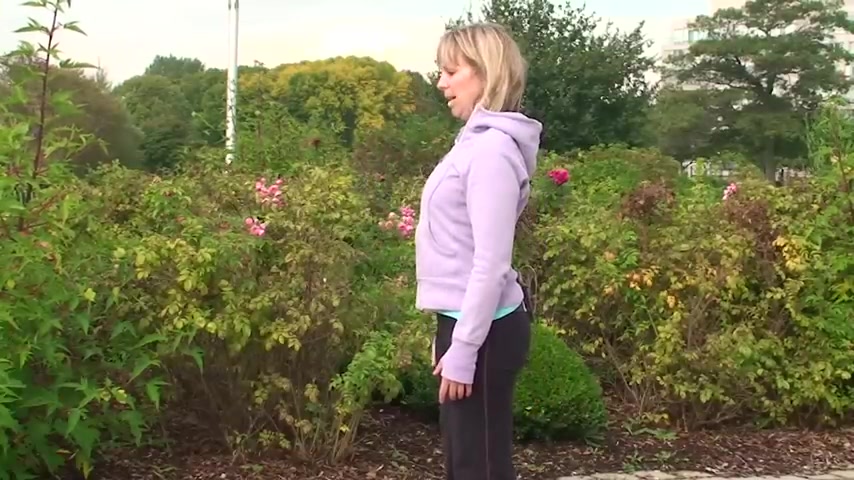
And then another thing that often happens because of looking at computers all the time and driving is our head gets way ahead of us .
And this is another example of how we really lead with our head and we're not really in our bodies .
So you're gonna bring your ears back over your shoulders .
Ok .
So this is pose , you set up this neutral posture from which all other poses can begin .
So as I said , when I first started taking this uh yoga , this pose was like , wow , we're not really doing anything here .
We're just standing .
I don't get what we're doing .
But what I came to understand and learn is that mountain pose teaches us to be strong and steady .
When there's a lot going on around us .
Just think about a mountain , especially in India .
There's a tons going on on them .
There's people farming , living on them .
There's spiritual pilgrimages going on .
And through all of this , the mountain stands strong and steady .
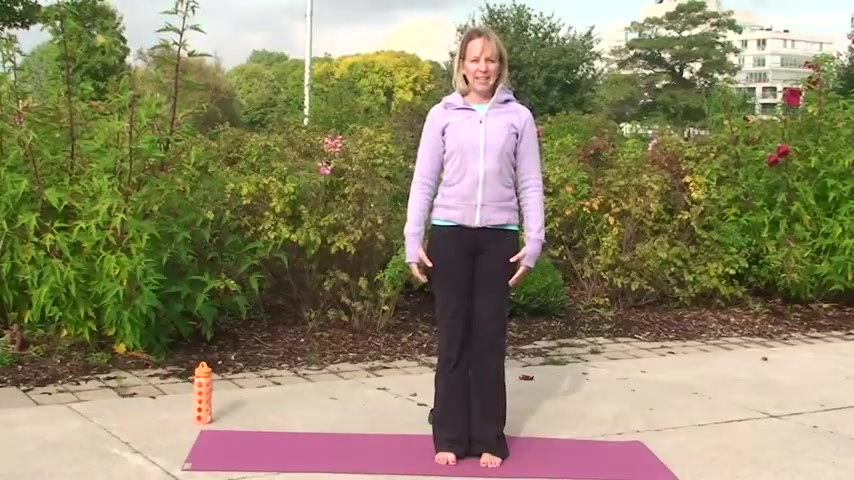
And so this teaches us to stand strong and steady , to stand in our truth , to stand in our own bodies , despite all the storms that are going on around us .
So it is actually a really important posture .
From this posture , we're going to come into a balancing posture .
So I've chosen tree post today because tree pose is a great balancing posture .
But also it's a posture that helps to ground us .
And generally speaking , because we're so busy screwing here there and everywhere our yoga at the beginning is really important to ground us .
So let's start by taking your stand on your left foot , turn your right toes out to the side .
So you can stay here with your foot on the ground .
If you want to challenge your balance a little bit , you can pick it up and bring it to the inside of your calf .
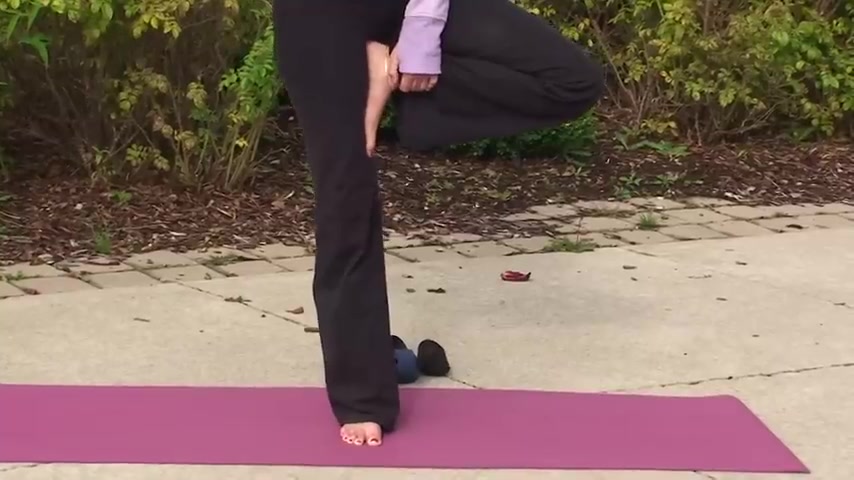
If you want more of a balanced challenge , you can bring your foot up to the inside of your thigh .
So one thing that I see a lot is people put their foot right on their knee joint and that's super , super bad because it's gonna put a lot of undue pressure on your knee joint and it could potentially hurt your knee .
So either above or below your knee joint , but not on it .
So I'll demonstrate with my foot below and then you can take your hands in front of your heart for a day and we'll talk about that a little bit more later .
And you can either choose to keep your hands or you can take your hands overhead , focus on something that's not moving .
So , not a good idea to look at me right now .
Find a point on the floor to focus on to help you stay steady .
Here .
Here's the thing with balance too .
It's never completely still .
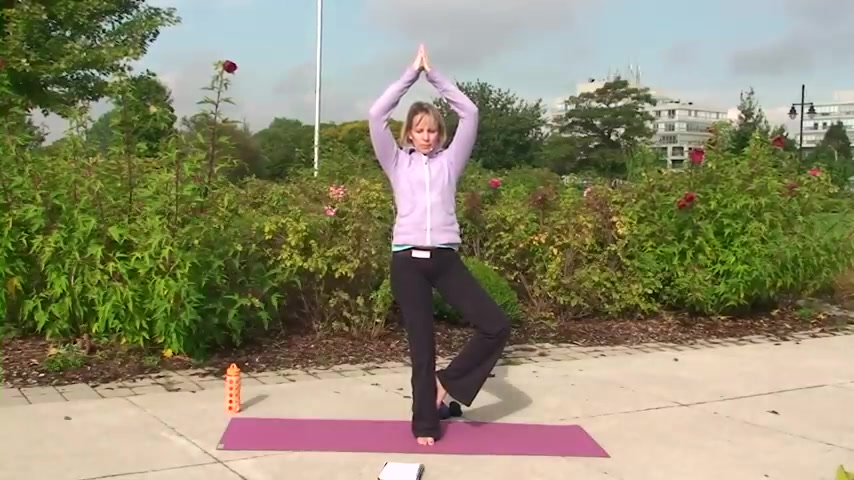
There's always movement and balance .
So that's OK .
That's never going to be really like you reach balance .
Balance is always in flux .
OK ?
And then release this posture from your body .
Come back to take a deep breath in and let it fall out of your mouth .
OK ?
Let's do tree pose on the other side .
So turn your left toes out to the side .
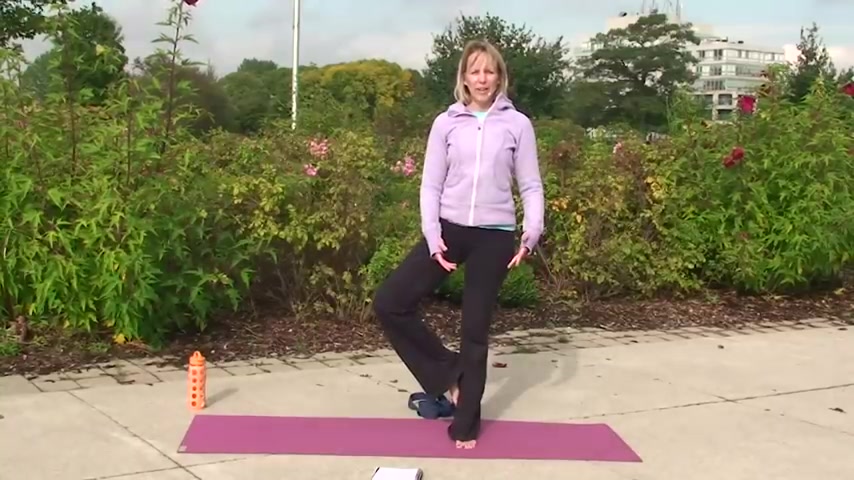
You can pick up your foot , take it on the inside of your calf or above your knee on the inside of your thigh , not on your knee joint though and keep your toes on the ground for extra stability , take your hands in front of your heart center and they could stay here or you can bring them up and overhead and especially when you're balancing .
Remember to breathe .
OK .
Release this post from your body .
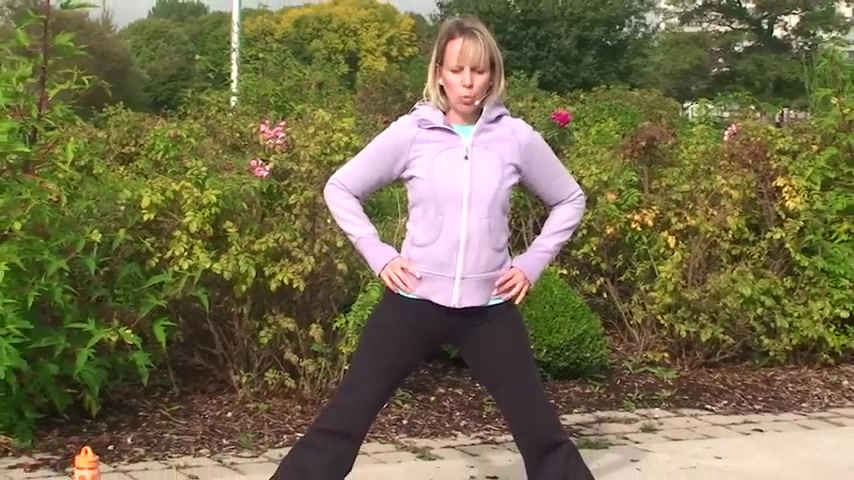
We're going to do a forward fold here to counter pose when you're just starting yoga forward folds sitting are super hard .
So it's good to do them standing when you're just beginning , it's a lot easier .
So let's take our legs wide on our mats lengthen up to your spine to come into this .
You're gonna roll your pelvis over the tops of your leg bones , so your spine stays straight , you lift and spread your sit bones behind you and keep going and then you're gonna fold your body forward , tuck your chin so that your , the back of your neck is relaxed and the crown of your head is pointing towards the ground .
So you can always place things under your hands here to raise the ground where you can place your hands on a chair .
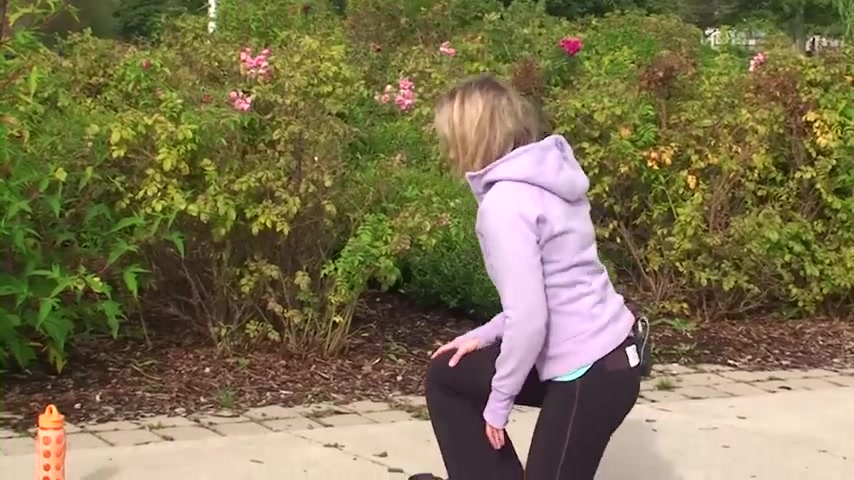
Ok ?
So now you're going to slowly come back up to standing and we're going to make our way down to lying down on our stomachs , ok ?
So on our stomachs , we're going to do Sphinx pose .
It's a little back bend .
So take your arms straight out in front of you , rest your forehead on the ground and just wiggle your hips from side to side to release your low back .
Now , press the front of your pelvis into the ground and then walk your elbows back underneath .
You keep your low back long .
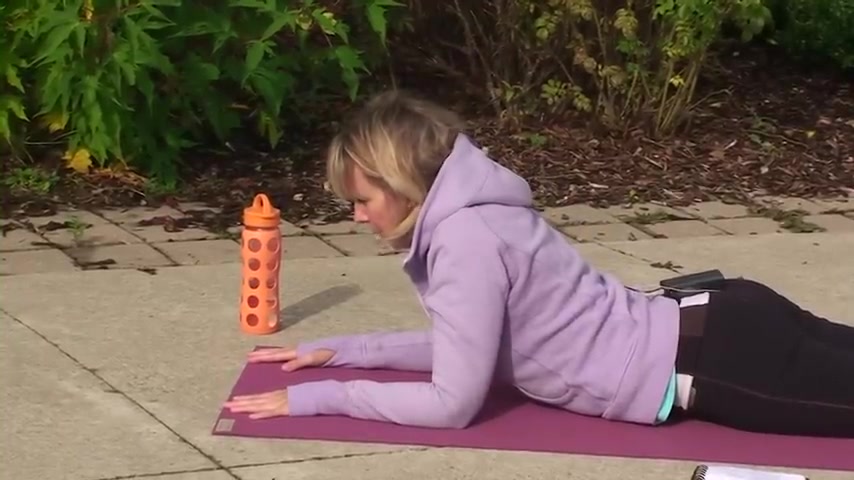
If you feel any pinching in your low back , you wanna back off , maybe walk your elbows a bit forward .
So here is what I see a lot in this pose , your ears way up by your shoulder .
So pull your shoulders down away from your ears and lengthen up through your spine .
This is another great counterpose for life because generally we tend to be rounded over our computers , our food , our driving .
So this bends your spine in the opposite direction .
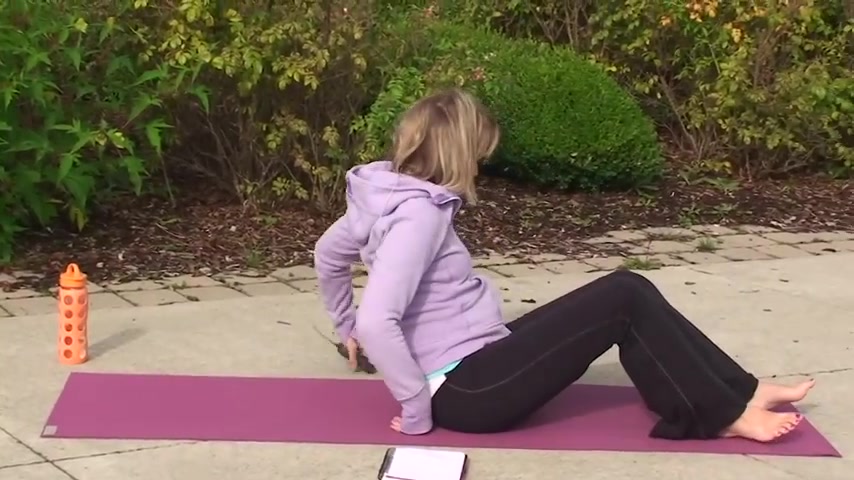
Case they are going to slowly come out of this pose and roll over onto your back .
So you can do knees to chest .
So do counter pose for your back bend .
You're going to do a forward fold by hugging your knees into your chest .
OK .
So we're going to finish our practice today with a twist .
Um Let's do it , let's do it this way , you're going to take your arms out to your side .
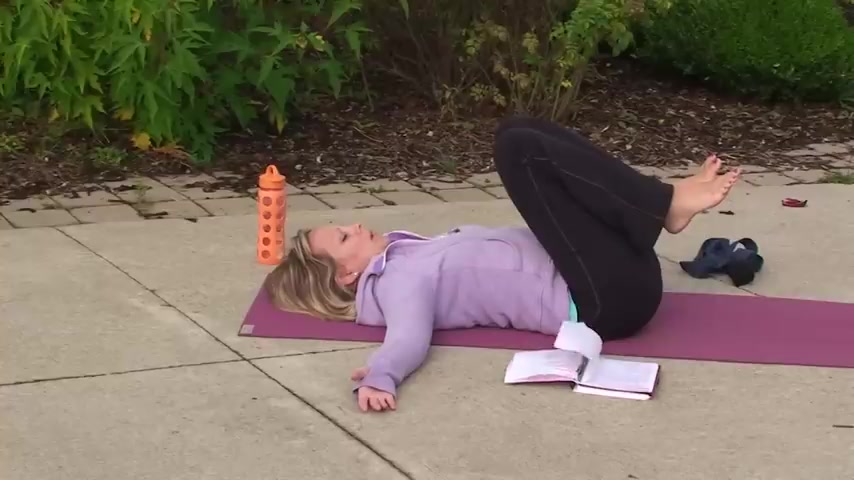
One thing I used to find was students would have their arms way up here .
So you don't want your arms above your shoulders just gently below them and then you're going to lower your knees over to your left side .
So you're coming into a twist , your shoulder may come right up off the ground .
That's OK .
You're going to , you could fill it with some rolled up blankets or a couple of pillows or something like that .
The most important thing here is that your pelvis is parallel perpendicular to the ground .
So see how mine is kind of going on this angle like this over time .
This can really aggravate your i joint .
So you just want to tuck your hip under a little bit more so your knees are really stacked up and then you'll look over your right shoulder .
Great twist for your spine .
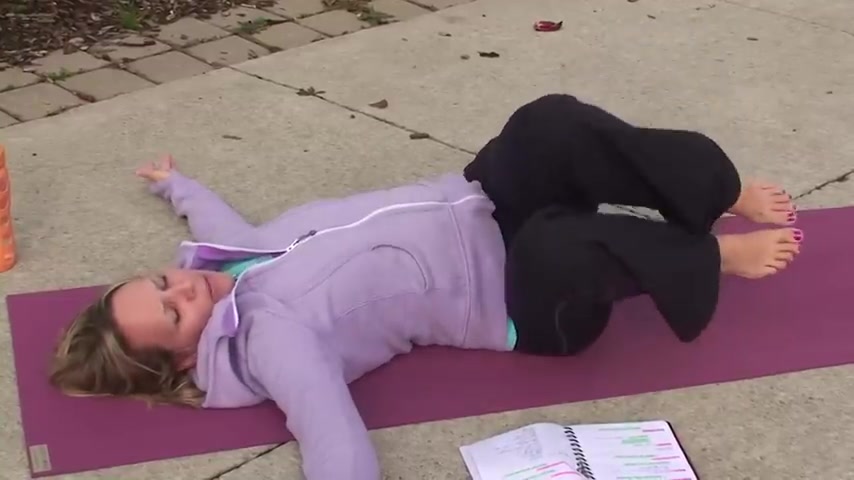
Ok .
Bring your knees back to the center .
Probably have to unpack your hips a little bit and take a deep breath in and exhale .
Let's come to the other side .
Just a little bit different .
Right ?
You're gonna bend your knees , place your feet flat on the floor , lift your pelvis up and then lower it down over to the left a little bit .
Now , lower your knees to your right side .
You're gonna look over your left shoulder .
You want to try and have your knees stacked right up on top of each other .
Twists are fantastic for all your internal organs .
They really cleanse your internal organs .
They're great for your digestion .
They help to , to stoke your digestive fire , really great for all your abdominal organs .
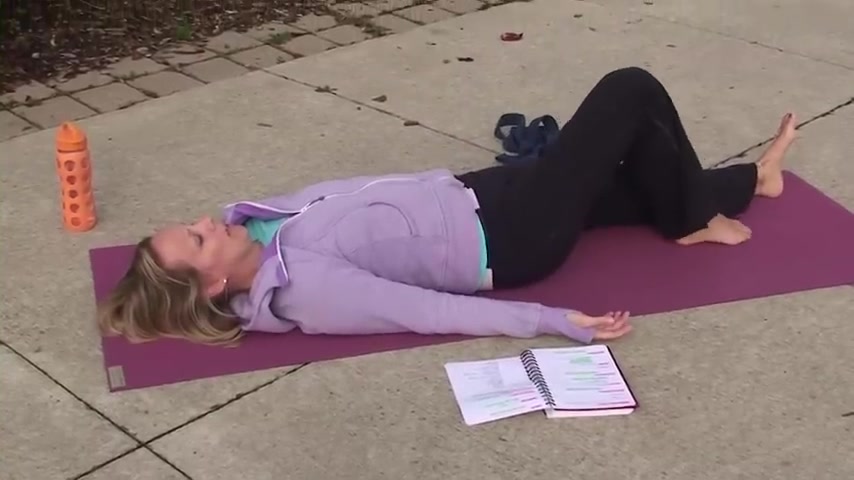
Ok ?
And then come back center , probably have to untuck your hips again and we're going to finish with .
So your hands are palms up beside you and lengthen your legs out .
So just check in with your low back here and see if you need to , if your low back is tender at all , you might need to bend your knees and place your feet flat on the floor .
And the thing is you might want to tuck your shoulder blades under a little bit so that they cut the back of your heart that allows your shoulders to rest a little bit more on the ground , going to rest here in for a few minutes .
And she is one of the most important postures in the class , probably the most important posture because it's the final posture as its name translates to corpse pose , it's all about letting go .
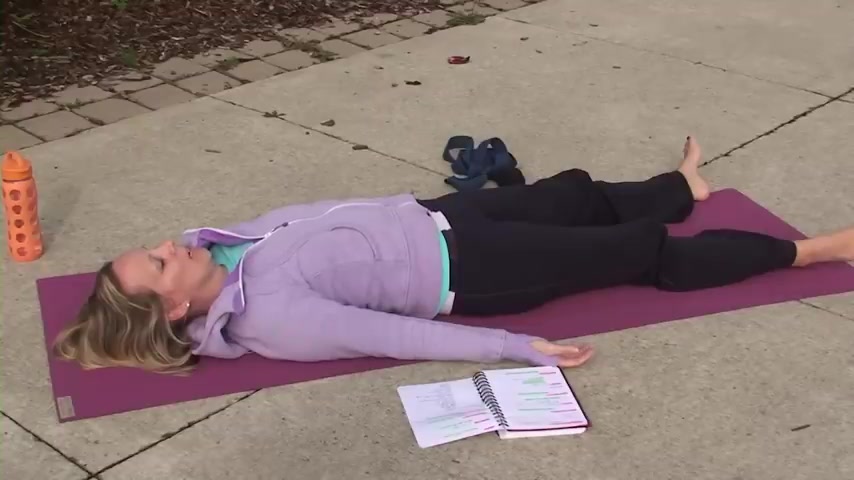
So in this pose , we can let it go of any physical or mental or emotional tension , we can practice letting go of attachments , attachment to outcome .
So we're literally practicing for our death .
It sounds kind of morbid , but it's really not .
The other thing that Shabana allows you to do is to integrate your practice .
So your body has just been through a lot , a lot of shapes and postures and experiences .
And so this is an opportunity for all those impressions to settle into your body , to receive your practice .
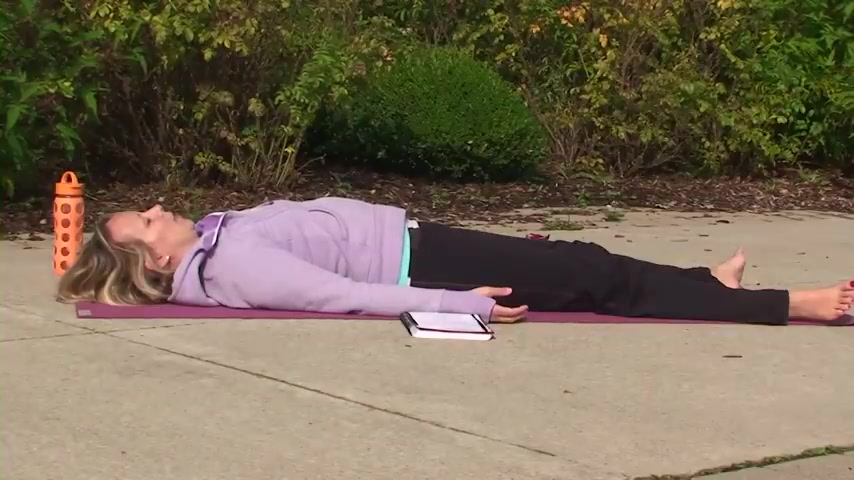
Take a deep breath in , let it fall out of your mouth , your fingers and your toes start to bring movement back into your body and to come out of corpse pose , you're going to bend your knees and roll to your right side , pause on your right side in a fetal position .
So corpse poses the pose of death .
And now here you're having your rebirth .
Um So this is a process of coming out of the yoga , slightly changed , slightly transformed .
Yoga is a transformational process .
And then you're gonna slowly make your way up to sitting , sitting .
So sit in a position that's comfortable for you .
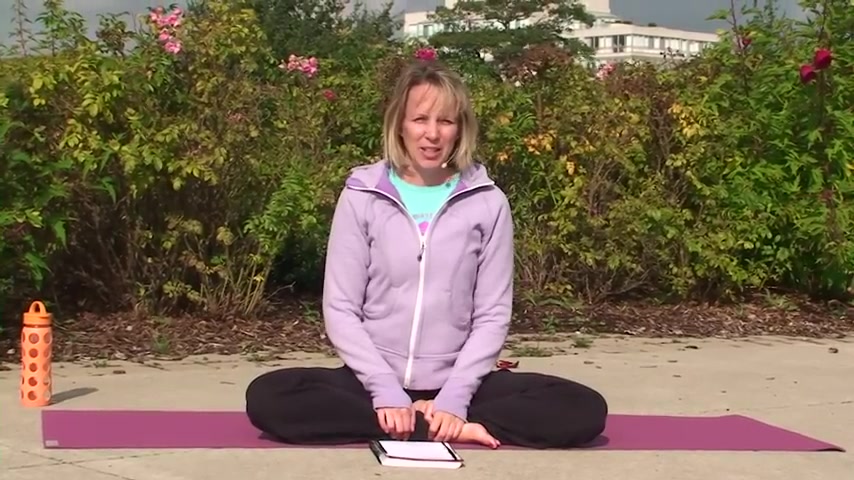
We finished our classes , greeting each other with Nama .
Stay with your hands at your heart Center .
And this is a way of honoring that divine light within you your true self like we spoke about at the beginning of class .
And so I want to share with you a translation of Nama Yoga Na Na from Ramdas .
This is how OK , can you hear me ?
Now ?
We finish our classes by greeting each other with Nama .
And this is that connecting with your inner light that I spoke of at the beginning , your true self .
And we honor that part of ourselves and each other by bowing to each other .
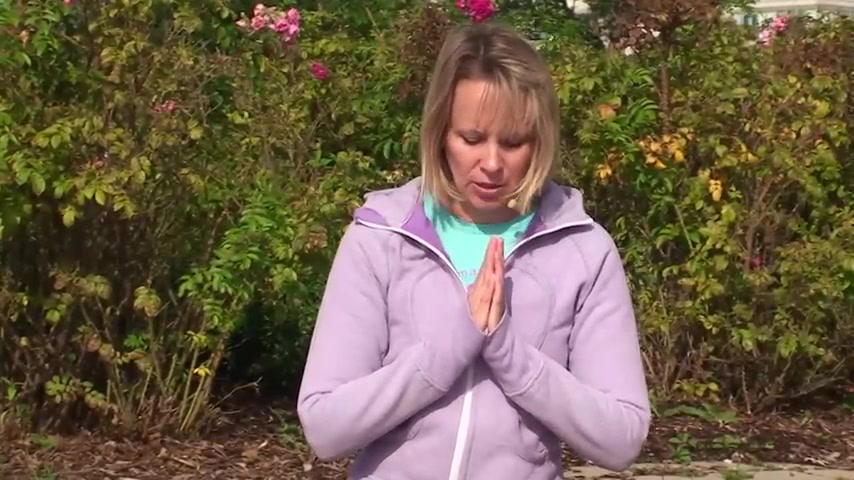
So I want to share with you Ramdas translation of Nama .
I honor the place in you where the entire universe resides .
I honor the place of love of light , of truth of peace .
I honor the place in you where it's in you and I am in that place and me .
We are one must thank you for joining us for episode 101 of Nama Yoga .
I hope you'll enjoy the 100 other episodes we have .
And I look forward to having you as part of our community on Facebook at Nayo .
Are you looking for a way to reach a wider audience and get more views on your videos?
Our innovative video to text transcribing service can help you do just that.
We provide accurate transcriptions of your videos along with visual content that will help you attract new viewers and keep them engaged. Plus, our data analytics and ad campaign tools can help you monetize your content and maximize your revenue.
Let's partner up and take your video content to the next level!
Contact us today to learn more.